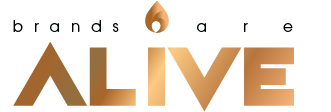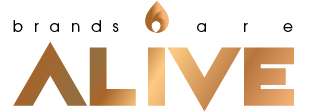MOJO # 54: Doing everything but barely making progress? Read this.
You know what sucks? Working hard on important things and still barely making progress.
The other day, I saw this "hot take" on LinkedIn.
“Is it really possible to build a business in just 1-2 hours a day?"
Cue the comments:
- "Hmmmm, no, not if you're a solopreneur."
- "No way! Anyone who says that is lying to you."
- I worked 10-16 hour days in my first two years in business before I saw any results.”
I knew I wasn't gonna make a point with a comment. Hence this motherloving article.
In this article:
1) How to identify your current business stage.
2)The main challenge you're facing if you want to move to the next one.
3)The approach to solving it.
And hopefully, you'll see that by focusing on the right things, you can in fact build something worthwhile even if you only have 1-2 hours a day.
I'm sure you heard it before: Work on the right things.
The trouble is that most people use "right" and "important" interchangeably.
A lot of things are actually important:
"Create content. Network and build relationships. Get new clients. Serve existing clients. Work on your mindset. Create processes and templates. To hire or not to hire. Build a list."
The tragedy is to work only on important things, and still get nowhere.
If you're working on important things at the wrong time, you're not working on the right things.
Let’s start with the basics:
- If you’re working on the right things, and you’re doing them well enough, then you just need enough time to get the thing done.
In this case, spending more time might help you, but only up to a certain point. (Law of Diminishing Returns)
- If you’re working on the wrong things, however, and/or if you’re not doing them well enough, then no amount of time spent will get you there.
- Most entrepreneurs aren't sure what are the right and wrong things to focus on when everything is important.
So they do everything.
Okay, now here’s the kicker:
When they're doing "everything" they can possibly think of, it's likely that 1 or 2 of the bazillion actions they took happened to be the ones that move the needle.
When they “make it”, they now have a bias that this is how much time you need to spend every day to build a business.
And since humans like to hang out with people we vibe with, naturally they befriend entrepreneurs of a similar energy and work style.
So now they're convinced this is how it works.
They literally played a game of odds.
Meanwhile, another entrepreneur took the same approach and worked 10+ hour days. But they make little progress compared to the effort they put in.
When you see it that way, you understand that it's not just about identifying what's important to focus on.
It's also about prioritizing based on our resources. Not only how much time we can spend working on our business. But how much money do we have to invest in it? How is our general physical and mental energy level? Do we have the skills and knowledge necessary to do the work, or is there a learning curve that we need to consider? On the flip side, do we have a natural strength, edge, or opportunity that can help us? And what are our natural preferences, what would feel most joyful?
Some of this is beyond the scope of this article and I would need to work with you one-on-one to help you with it. But I can share with you how to identify your current business stage, the main challenge, and what focus and approach is ESSENTIAL to prioritize if you need to make an impact with limited resources.
Identify your current business stage:
Note:
- It’s not all black or white. You can be in between stages or in multiple ones all at once.
- Not all the points will apply to you.
- Only you know which stage sounds most like your current situation. Be honest with yourself so you can move forward faster.
Stage 0-Concept Ideation/Testing
- Pre-launch or just launched.
- You have an idea or message, but you’re not crystal clear yet.
- You may have identified a problem and you have a different approach to solve it, but you haven’t figured out how to package what you do in a way that brings in consistent buyers/results.
- At this stage, you’re spending a lot of your time thinking and planning. You’re likely in hyper-learning mode, and you’re sampling from different resources.
- This stage is often vilified but is actually important. The key is to not get stuck here for too long. Clarity comes with action.
Moving from this Stage (Stage 0, Concept Ideation) to Stage 1 (Viability)
Challenge:
- Solving a meaningful problem for at least one ideal customer/client/audience segment, and doing so in a differentiated way.
- Identify the type of customer with that problem and the willingness to pay to solve it.
- Understand & create the minimum viable solution to this problem.
- Build a marketing and sales process that works with your business.
- Learn how to get results repeatedly and sustainably.
What to focus on/Approach:
Client and product discovery, with a focus on discovering the right problem to solve
- Stay very close to customers. It’s not just about discovering potential products, but discovering the right problems to solve.
- Talk to every customer you can get your hands on, and listen to more than their words.
- Try to understand their worldview and assumptions.
- Know the alternatives and why your solution is the one for them.
Once you’ve identified the problem, you want to help them answer these 3 questions:
Why should they buy this?
Why from you specifically?
Why now?
Stage 1: Viability
- You have a clear definition of the problem and solution, with well-defined use cases.
- You’ve started getting clients and making money.
- Revenues may or may not be consistent.
- Your business model is (likely) primarily based on 1-on-1 services.
- You may or may not have achieved validation of Product Market Fit.
- You get new clients mainly through discovery calls and client referrals.
Moving from this stage (Stage 1, Viability) to the next one (Stage 2, Product-Market Fit)
The challenge:
Growing sustainably. You have many opportunities but limited resources.
- You’re looking at a diverse set of customers/clients and potential clients. Each one seems to have unique needs and requirements.
- They all fit in your longer-term vision for your business (i.e. they fit the problem-solution), but you’re spread too thin to make them all happy right now.
- You can’t deliver a solution that is compelling enough to satisfy the needs of more new buyers.
- Only you are able to sell your offers because each potential client has unique needs.
What to focus on/Approach:
Focus on your favorite segment of customers.
- Focus on a subset of customers (a type of customer you most enjoy working with) where you can be overwhelmingly compelling and grow your reach.
- Your offer needs to be clearly better than any alternatives.
- Your brand needs to be most uniquely qualified to serve this group. This generally happens when you are the “niche” you serve.
- Prioritize opportunities based on strong alignment with your ideal client profile or ideal work, and choose use cases where you can show stronger value.
- You want to identify your most successful marketing and sales initiatives and turn them into processes that attract and convert your most aligned clients without necessarily exchanging your time with every interaction. E.g., creating growth content.
Stage 2: Product-Market Fit
- Your business model is based primarily on selling information or digital products (eg courses), group programs, and/on other scalable products and services with high potential for subscription or repeat purchase.
- You have achieved product-market fit. You have a core group of happy customers/clients in your target market segment. Customers are not just buying — they are buying again, buying at higher rates, using/applying your product/service, and telling others about it organically.
- You get new clients/customers through diversified marketing assets built over time - eg social media accounts, videos, case studies, published articles, blog posts, email lists, etc.
Getting from this stage (Stage 2, Product-Market-Fit) to the next (Stage 3, “Ma, I made it”)
What to focus on/Approach:
I have no advice here because I haven’t achieved this (yet.)
I’ve worked with people who have, and I’ve learned a lot from them, but none of it would be based on my personal experience.
Here’s what Stage 3 looks like:
Stage 3: "Ma, I made it"
(AKA “Please hide my contact page”)
- You’re likely a media personality whose business model is based primarily on selling books, public speaking, and “celebrity” level services.
- This is the stage where you appear to be everywhere as you lean more on paid advertising and PR and continue creating new marketing channels.
- By this stage, you likely have a complete in-house marketing department.
- You focus your attention on growing and nurturing a brand community for retention (loyalty) and word of mouth.
Putting it all together:
Remember that marketing your business is going to be a process of constantly working on achieving better product-market fit. When will you know you’ve found your “product-market fit”?
Stage 0 or 1: When you’ve landed your first initial clients and made them successful.
Stage 1 or 2: When you have a repeatable process with a clear target market segment and predictable results.
Stage 2 or 3: When what you offer has so much demand that you can barely keep up.
Only you can answer the question of what stage your business is in.
You don’t have to grow into all of them. You can stay in 1 forever and never seek anything beyond comfortable and modest living.
And you don't have to say no to projects just because they're not aligned with your current business stage.
You can write a book or build a media engine in stage 0 because that's what brings you joy.
But the point is to do all this from a place of knowing and accepting where you are.
The sooner we can get honest with ourselves, the faster we can grow.
Good luck.
If you enjoyed this piece, join our newsletters for more
Every Saturday I send 1 actionable tip to uncover your Essence & build a brand that makes you feel alive.


0 comments
Leave a comment